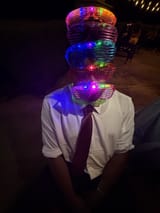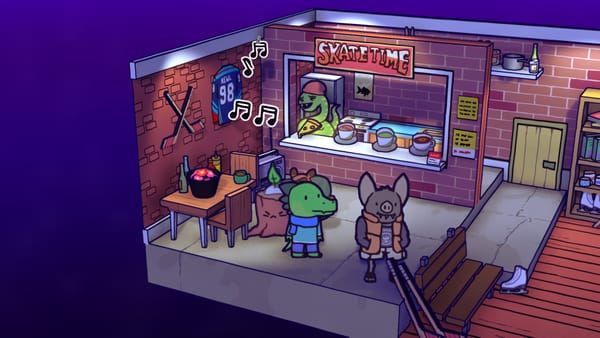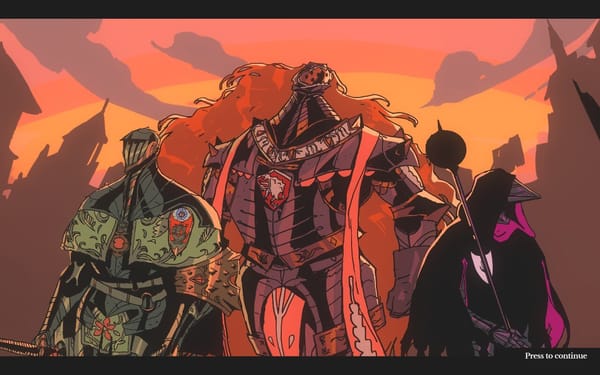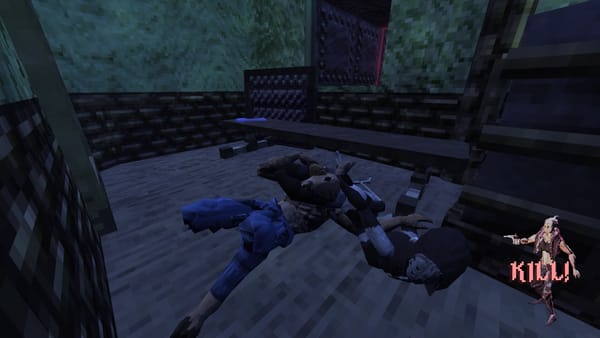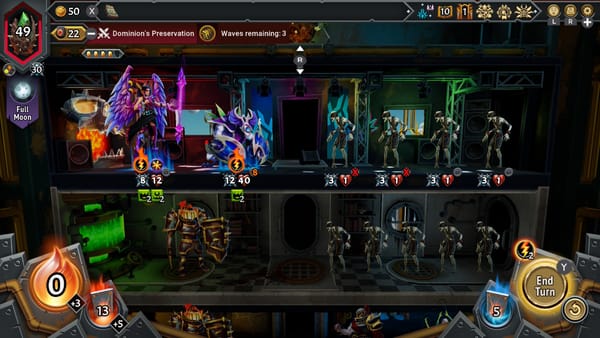How Femininity is Portrayed in Doom (2016)
Sex and women? In my Doom?
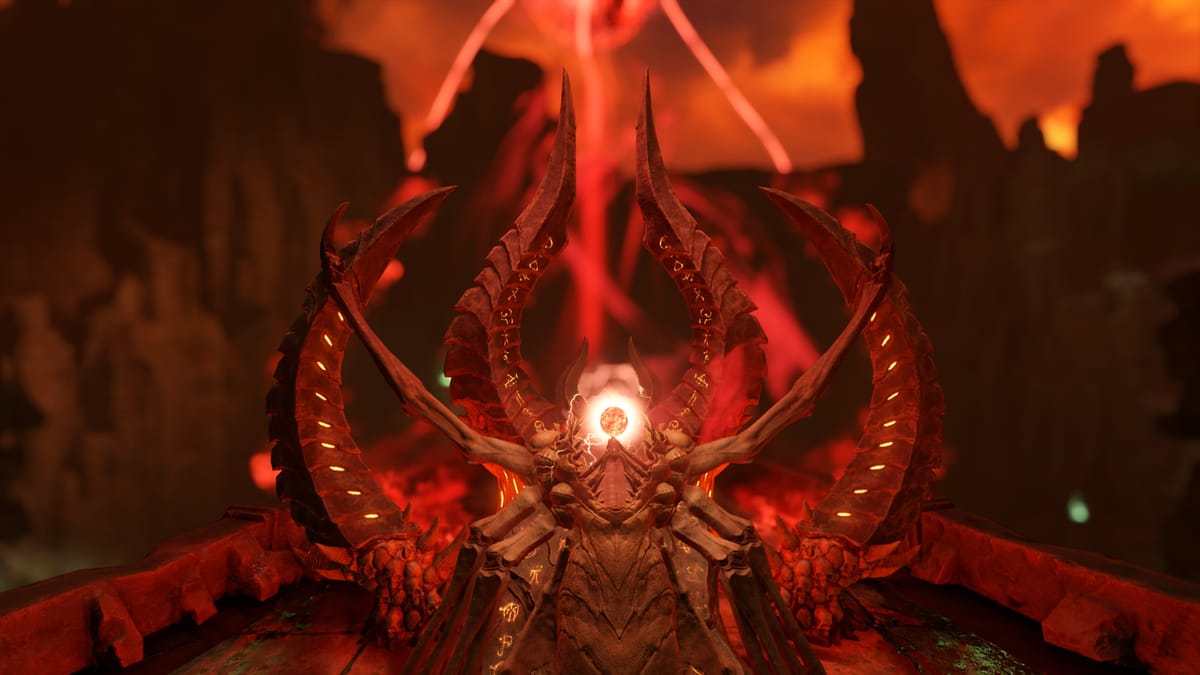
Editor's note: We at Stop Caring stand in support of the Palestinian people and condemn the genocide in Gaza. Microsoft, specifically the Xbox brand, has been named a priority target for the BDS movement, due to the company's complicity with the atrocities committed by the IDF. Doom 2016 is published by Bethesda, which is owned by Microsoft. Since this essay on Doom 2016 is releasing in late June, we feel it's important to clarify:
*The pitch that led to this article was accepted weeks before the BDS movement named Xbox/Microsoft Gaming as a priority target.
*The copy of the game that was used for this article was bought even earlier than that.
*This article went through various iterations, rewrites and edits, hence why it took a while to be released.
Stop Caring has not materially supported Microsoft Gaming since the BDS announcement, and, past this point, we will not accept any future pitches on games developed or published by Microsoft/Xbox.
Lawrence and I both urge people to abstain from purchasing games developed or published by Xbox or Microsoft Gaming. Free Palestine.
When I was playing Doom (2016), I found myself intrigued at the kind of antagonists the game offers. In one corner is Olivia Pierce, a scientist at the Union Aerospace Corporation (UAC) who’s gone mad trying to open a permanent portal between Hell and the mortal realm. The game initially touts her as the catalyst for the events that force Doomguy out of his centuries-long slumber, but simply playing the game shows the player that the real mind behind it all is Samuel Hayden, the man-turned-machine who spearheaded the UAC operation for Hell energy in the first place.
My time shooting through demon-infested playgrounds was spent less on finding glory in ripping my enemies apart (don’t get me wrong, it was still a good time), and more on meditating about why things got this bad. The world of Doom is in an energy crisis, and gathering Argent Energy from Hell seems to be the only way to fix it. After finishing the game and giving it the detailed look it deserves, I came to the conclusion that from top to bottom, Doom (2016) is about the potential for destruction that masculinity carries.
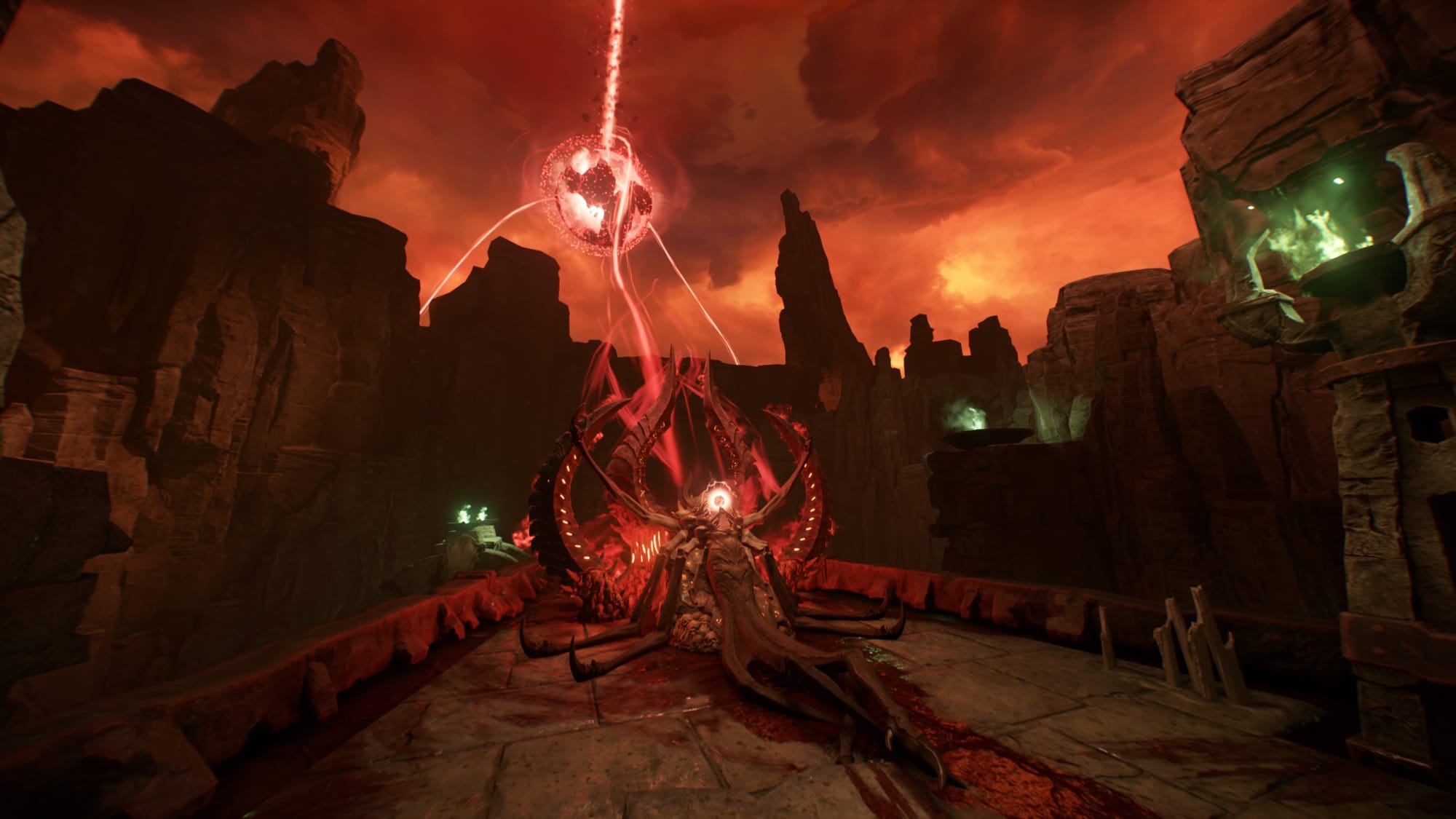
What you're looking at, in the screenshot above, is a Wraith, an elemental being deified by the inhabitants of Hell. The codex entries discuss the creature's history and how it was fought for, worshipped, and protected in a war that happened ages ago. But what I saw, dear reader, was no beast, but a maiden laid out for our knight in green armor.
The feminine imagery piqued my interest immediately. A lean, smooth, curved body lying back with its legs crossed and arms open to embrace. Behind this demonic fertility statue is a bed of horns, yonic and curving into the sky, firing a beam of hell energy into the last gateway for demons to enter our reality. When Doomguy encounters any of the three Wraiths, he plunges a knife into the bright orb floating above their chests and twists it, letting out a massive release of argent energy before shutting down. If this isn't a hell of an orgasm, I don't know what is.
This interaction is a metaphor for sex, but, more so, represents the power and dominance that are often gendered and related to the act of carnal intimacy. Doom is a power fantasy, ripping and tearing through all sorts of grotesque demons while reluctantly working with Samuel Hayden, a man who embodies greed and control to the extreme. Doomguy is a tank of a man, rippling muscles barely restrained by his green armor, and an arsenal of guns powerful enough to burn through the bodies of even the toughest demons. Doomguy is aggression incarnate, and when he climbs on top of the Wraith's slender, sacred body and plunges his knife into it, he leaves it quiet and no longer feeding energy into the portal.
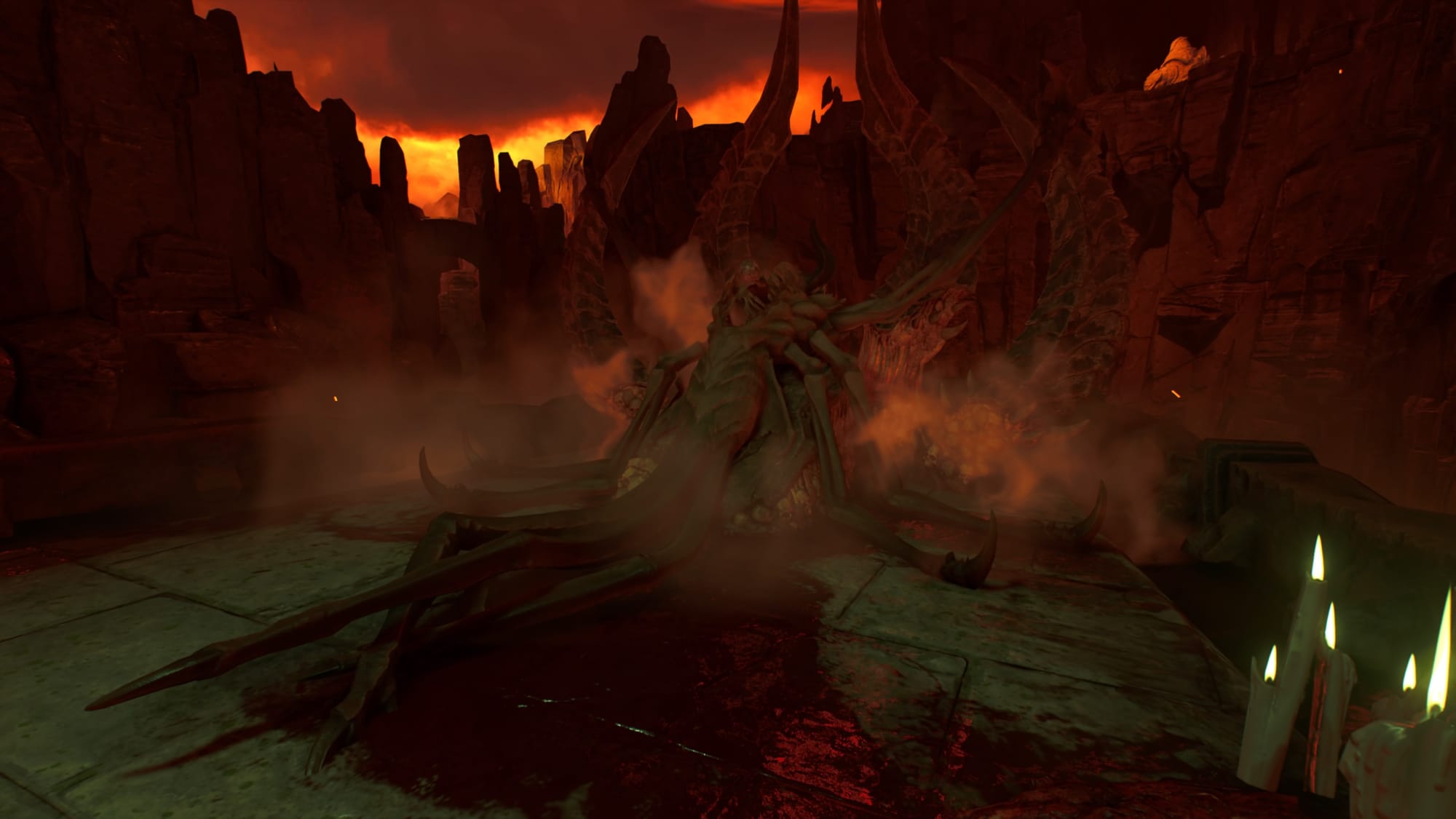
Doom’s femininity expands further onto the battlefield. The Summoner is the only demon with a feminine design, opting for a narrow blue body with softer features over rippling muscles. The bone sticking out of its head resembles a headdress, and it has two wings of flesh behind it that resemble a skirt. Similarly to the Wraith, the Summoner’s body is curved and thin, meant to stand out against the hulking brutes that charge at Doomguy. In combat, it fires off waves of argent energy and zips around the map, trying to avoid close combat as much as possible.
Its movements are smooth, the way it twists around itself is almost tender, but is still accompanied by the jagged movements that characterize Hell’s inhabitants. Most importantly, the Summoner is a progenitor, as it spawns demons from a pentagram that it burns into the ground directly below it. Not only does this enemy break the normal conventions of combat that have been introduced up to this point, but it brings a new visual element to the battlefield with its feminine design and racing blurs that it leaves behind.
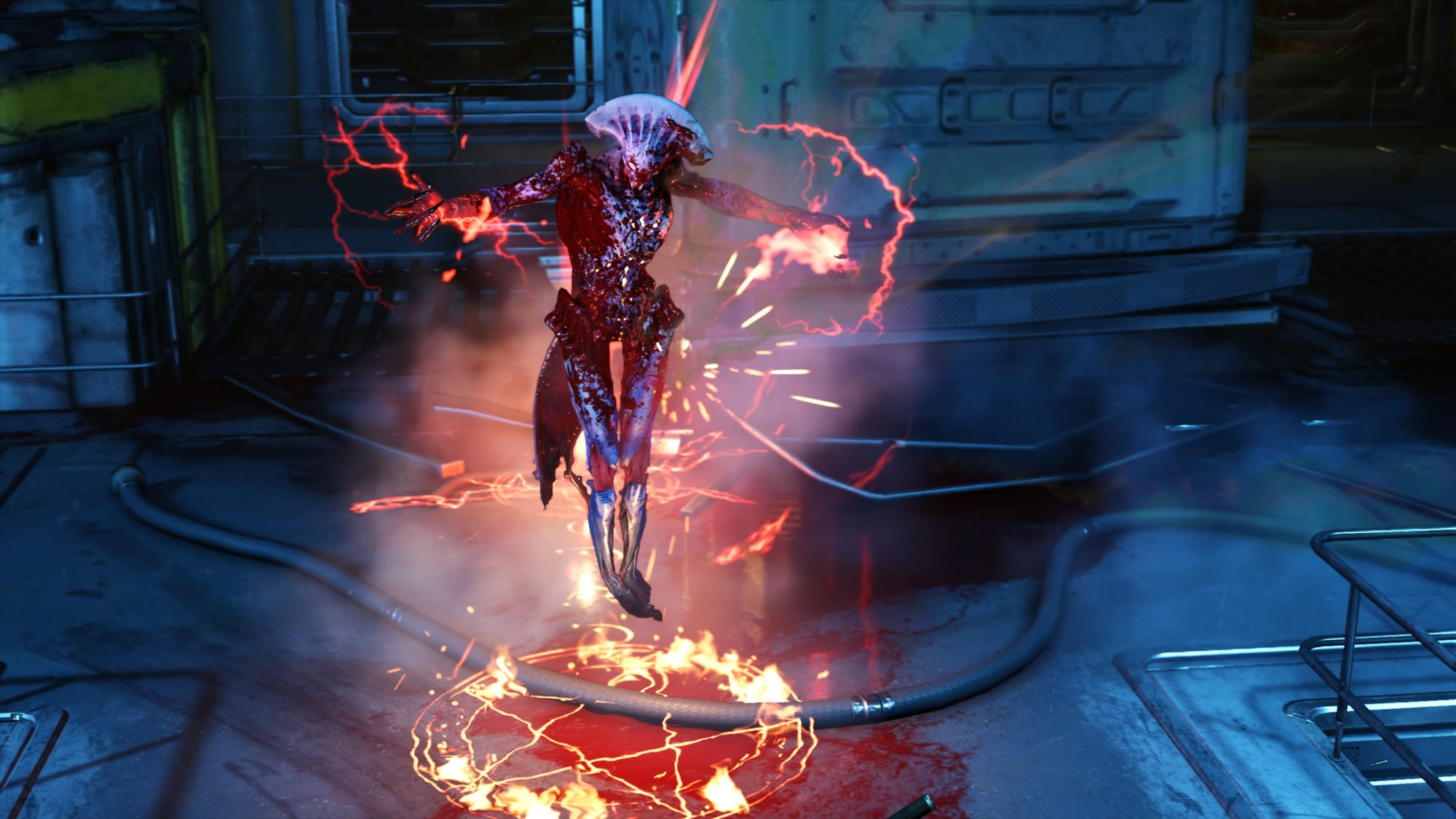
None of this is to say that Doom is a commentary on masculinity versus femininity. Rather, that while the masculinity of Doom is rooted in aggression, control, and power, its femininity is embedded with manipulation, control, and maternity. It takes some of the most harmful and prominently gendered traits, cranks them up to 11 in front of a badass metal soundtrack, and lets the player figure it out for themselves.
Olivia Pierce’s story bookends the game in a poetic way.
She shows up a handful of times in the game, and the few scenes she's in hardly speak to the complexities of her character. Her time at the UAC is spent studying Hell to find a solution for humanity's energy crisis, but her ambitions change slowly as a mysterious artifact alters her mind. She forms a demon-worshipping cult, spends research money arming demons with cybernetic augmentations, and tries (and fails) to hide the location of Doomguy's sarcophagus. The game's narrative focuses on how she's the one responsible for activating the portals between worlds, believing that she will be given a new world to offer her followers and be free of her illness.
In my initial perception, I threw Olivia in with the rest of the cast and marked them as crazy scientists who bit off more than they could chew. Looking into the game’s codices, however, shows that her time at the UAC was wrought with manipulation. Samuel Hayden persuades her to join him on his research with the very artifact that corrupts her mind. Despite seeing her strange attraction to the occult, he allows her devotion to continue because of the value and productivity she brought, rather than stripping her of the artifact and potentially healing her mind.
The unseen demon lord that coaxes Olivia through the object has her hobble through Mars' facilities in a disheveled body to work towards opening a permanent gateway to Hell. And when all is said and done, as Doomguy rips and tears through enemy after enemy, all that is left is a solitary Olivia Pierce who says,
They promised me so much.
This applies to both Samuel Hayden and the demon lord, as both have done nothing but use her since before the game began. If Doomguy is aggression, then Samuel Hayden is control. His exterior highlights this plainly enough; he's a man who should've been dead ages ago but transferred his consciousness into a machine. He is a man trying to play God, trying to control the very factors that make us human, and Olivia is another victim of his steel hand.

Her final form is the Spider Mastermind. The codex entry reads "Carried in the mind of all who follow, fed from the blood of those who fell, made with bone of rock, iron, steel and sinew. A mighty god to rule over all other gods. One become two become legion." Her form here is meant to represent the unity of man and monster, an evolution of the other metal-infused demons the player blasts throughout the game, as well as being a physical representation of the portal between worlds. The Spider Mastermind's weak spot is its exposed brain, the same muscle that has been under constant abuse. Olivia was a sick woman who was promised a chance to change the world but instead was used and discarded when her efforts fell apart.
Olivia’s role and death binds together the other feminine portrayals in Doom. Her leading the operation to arm the demons with technology and open the portal between realms is akin to the Summoner’s role on the battlefield. The Wraith feeds her argent energy to activate the portal, and both are deities, built to offer strength to Hell’s inhabitants. Doom (2016) is a battleground of gender stereotypes, constantly in collision with one another until the very last drop of blood is spilled.

Stop Caring is reader supported and 100% free. Please consider subscribing or making a one-time donation to make more of this possible. All donations on this article go directly to the author.
If you are interested in writing for Stop Caring, please reach out via the email listed on the contact page or dm Artemis on Blue Sky. Stop Caring offers compensation, loads of creative freedom, and no deadlines. All it asks for in return is open communication, no pieces that promote discrimination against vulnerable groups, and please, for the love of God, leave that AI shit at the door.

